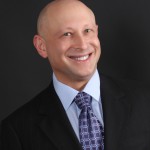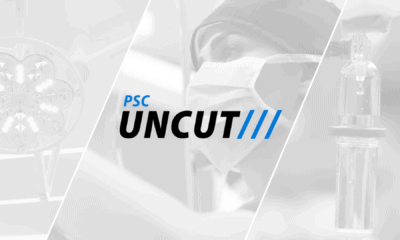No one likes to see loose, sagging skin. It might even be the hallmark of aging. “Jowling,” or the loose drapes of skin that hang off the jawline, is particularly distressing for both men and women. While a facelift or a neck lift is a fantastic procedure for eliminating loose skin, both are surgical procedures the require anesthesia, incisions and downtime for recovery. Many patients don’t have the time or the inclination for a surgical intervention.
This helps explain why there has been such a huge recent explosion in non-surgical skin tightening options. Dr. Jason Pozner of Boca Raton, FL and Dr. Barry DiBernardo of Montclair, NJ discuss the pros and cons of Ultherapy, the oldest ultrasound skin tightening device, as well as whether or not its new competitor Soft Wave will be a better option.
Patients Want Non-Surgical Skin Tightening
Facial aging is multi-factorial. When a patient looks in the mirror and does not like what he or she sees, it is typically due to one or more of the following:
- uneven, “crepey” skin texture
- fine lines & wrinkles
- loss of volume, particularly in the mid-face
- loose, sagging skin in the lower face and/or neck (jowling)
Non-surgical procedures such as laser skin resurfacing, chemical peels, Botox and fillers can effectively address the first three items on this list. The fourth item is the last frontier of non-surgical rejuvenation: skin tightening. It’s difficult to achieve, but something that patients really want. Everybody lives busy lives these days and many patients do not have the time for the lengthy recovery required with most surgical procedures. Furthermore, some patients can’t have surgery due to medical issues or simply don’t want surgery. The question then is whether or not it’s possible to get any significant skin tightening improvement non-surgically.
Non-Surgical Skin Tightening Options
Plastic surgeons are always at the forefront of innovation, looking for new and better ways to meet their patients’ demands. Since non-surgical skin tightening is highly desirable, there has been a recent uptick in the quantity and type of procedures to lift and tighten loose skin without surgery. These include:
- microneedling
- radiofrequency (RF)
- microneedling with RF
- ultrasound energy, such as Ultherapy or Soft Wave
Each has its pros and cons, but the goal of all is to deliver skin tightening without any downtime. The godfather of these procedures is Ultherapy.
Ultherapy Versus Soft Wave
As two of the world’s experts on facial rejuvenation without surgery, Dr. Pozner and Dr. DiBernardo are well suited to weigh in on the latest non-surgical skin tightening device to hit the market, Soft Wave, and whether it can truly improve upon Ultherapy. Both devices use focused ultrasound energy to heat the skin in the treatment area in order to induce the body to produce more collagen. Akin to the support beams in a house, skin with a higher degree of collagen is naturally firmer, smoother, more lifted and, thus, more youthful looking.
Ultherapy has been around since 2009. “I had the first one in the world,” says Dr. Pozner. But does its age make it obsolete now that Soft Wave is about to hit the market? “Both of these devices are good because it offers the patient a no downtime treatment for tightening the skin”, shares Dr. DiBernardo. That said, the Soft Wave device is touted as being a better treatment because it is a little faster, more comfortable, and able to produce more energy with its seven transducers.
Cons of Ultherapy
FDA cleared to treat the brows, chin, neck and chest, Ultherapy is the most widely used name brand when it comes to non-surgical skin tightening. The problem with the procedure is that while some patients do experience some tightening in the treatment area, there are a number of what is called non-responders. These are patients whose skin, for whatever reason, does not react to the treatment and they experience no benefit. The non-responder rate with Ultherapy is about 20% – a lot considering the expense. Also, “the damn thing hurts,” explains Dr. Pozner. “People come in and they aren’t coming back for another one.”
No Downtime
The main appeal of a non-surgical approach with skin tightening is little to no downtime. Patients will definitely experience some post-procedure swelling. This is literally the body’s way of healing and actually a sign that the treatment is working. Most of the swelling will dissipate in the first couple of weeks, but it may take anywhere from 2-3 months for a patient to see his or her final results. Most patients feel that this is a fair trade off for no incisions, no anesthesia and no recovery. If Soft Wave lives up to its own press, “I think there will be a great market and it will be a great device. If it doesn’t work, it will just be another piece of junk in the corner,” says Dr. Pozner. For now, only time will tell.











Facebook
Twitter
Instagram
YouTube
RSS